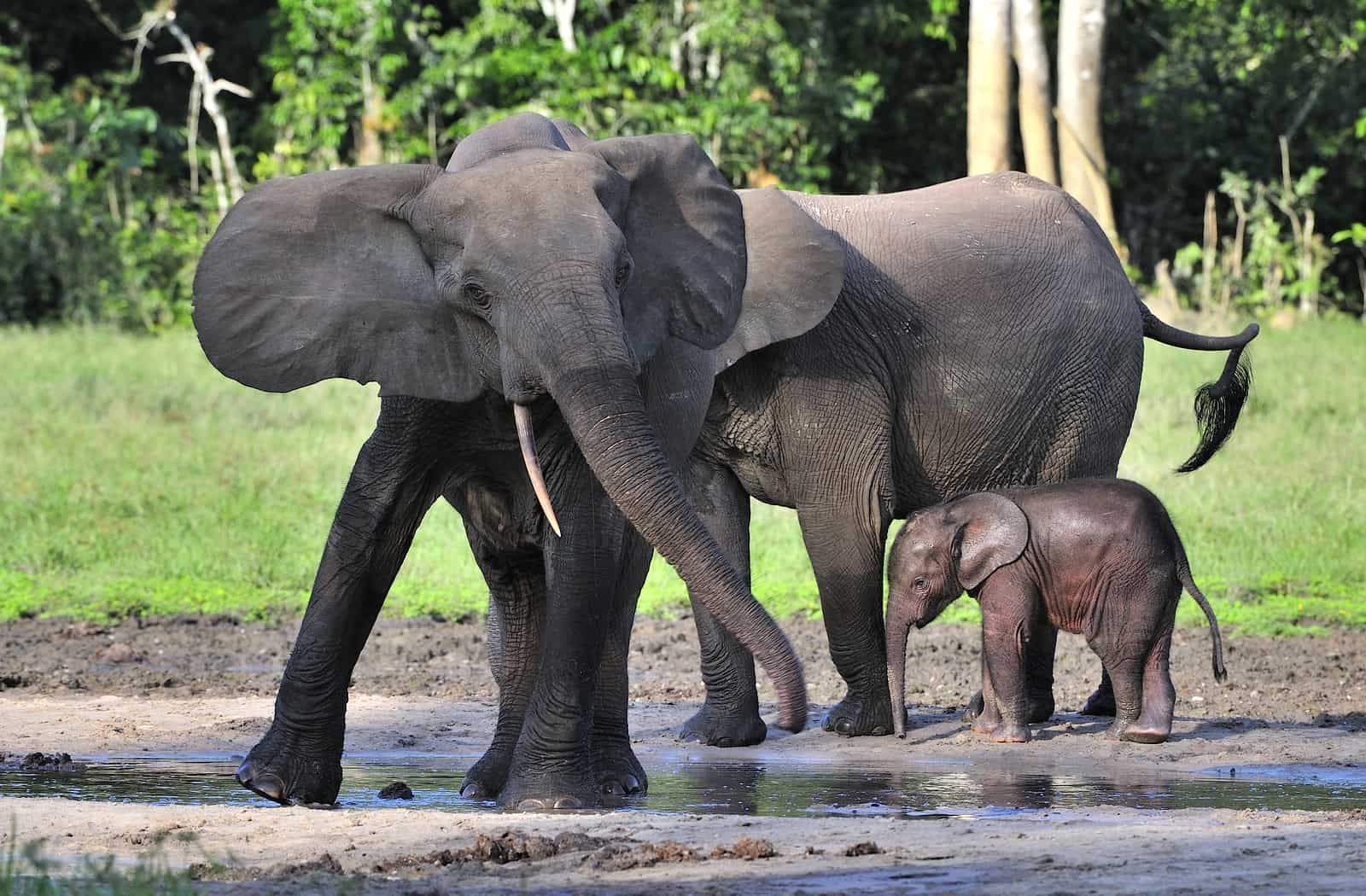The African Forest elephants
African Forest elephants: Uganda is among the naturally gifted countries and among the many gifts are the giant African Forest Elephant seen while on safari in Uganda. The Asian and African elephant are the only two remaining elephant species in the world and Uganda is home to the latter. There are around 5,000 elephants in Uganda today. They are mostly found in the landscapes of Kidepo, Murchison, Semuliki, Kibaale and Bwindi Impenetrable Forest.

Facts about African Forest Elephants
Shape and size
African forest elephants are smaller than other African elephant species. Their ears are more oval-shaped and their tusks are straighter and point downward. Furthermore, have differences in the size and shape of the skull and skeleton compared to other elephants. But even though the forest elephants are smaller than the savannah cousins, they are still massive and weigh up to 3 tons and the length of their body is between 4 to 5 meters.
Production rate
African Forest elephants are getting exitinct because they have a much slower reproductive rate, so they cannot bounce back from population declines as quickly at the same rate. Their last strongholds are located in Gabon and the Republic of Congo. More so, with smaller populations remaining in other African countries (Cameroon, Central African Republic, Equatorial Guinea) and Côte d’Ivoire, Liberia, and Ghana in west Africa.
African forest elephants live in family groups of up to 20 individuals and forage on leaves, grasses, seeds, fruit, and tree bark. Since the diet of forest elephants is dominated by fruit. In addition, they play a crucial role in dispersing many tree species. More so, particularly the seeds of large trees which tend to have high carbon content. They are therefore referred to as the ‘mega-gardener of the forest’. To supplement their diet with minerals. Furthermore, they gather at mineral-rich waterholes and mineral licks found throughout the forest.
Communication.
In addition, African forest elephants communicates with others over long distances through calls that are often too low that is not heard by humans. As they live in the forest, these forest elephants are so destructive than their savannah cousins for instance taking down trees. Again, they digging up ground and destroying the underbrush for their trails.
Gestation period
The gestation period of the forest elephants is 22 months and give birth to single calf. There is no specific time they breed but they normally breed at any time of the year. Forest elephant mothers are very protective of their young and stops at nothing to rescue them from harm. It is a fact that mothers wrap their tails around their babies to bring them close and away from danger
Feeding
African Forest elephants eat grasses, leaves, shrubs, fruits and roots depending on the season. When it’s particularly dry, forest elephants eats more woody parts of trees and shrubs like twigs, branches and barks. They need to eat up to 150kg of food per day. To eat these, elephants sweep loose items into a pile and crush them into a manageable solid that are picked up by the trunk.
Memory
It is believed that an African Forest Elephant never forgets. Their area of the brain associated with memory is larger than that of human beings hence the saying ‘elephants never forget’

Note
African forest elephants are the elusive cousin of the African savanna elephant. They inhabit the dense rainforests of west and central Africa. Moreover, their preference for dense forest habitat prohibits traditional counting methods such as visual identification. In addition, their population is usually estimated through “dung counts”.
Where to spot African forest Elephants in Uganda.
In the past times, elephants had an extensive range of habitats across the country through migration corridors but this is threatened by the constant poaching by humans and current increase in human population, coupled with the demand for arable land and settlement. Furthermore, this reduces the number of elephants as well as reducing the suitable habitat range for elephants in Uganda. This trend contributes to the fragmentation of elephants’ habitants are now limited to protected areas except a few which are in patchy habitats outside wildlife protected areas.
At the moment the largest population of elephants in Uganda are spotted in Queen Elizabeth National Park with a total of 2913 elephants followed by Murchison Falls National Park with a total of 1330 elephants.
Below are the popular reserved areas in Uganda where elephants are most spotted in bigger numbers.
- Murchison falls National Park
- Queen Elizabeth National Park
- Semuliki National Park
- Kidepo Valley National Park
- Mountain Elgon National Park
- Kibaale National Park
- Bwindi Impenetrable Forest National Park
However, there was a decrease in the number of elephants during massive poaching times, its good news that there is now a gradual increase in elephant population since the late 1980s. This recovery increase in elephant numbers is largely attributed to successful conservation efforts implemented by Uganda wildlife Authority.
Uganda Safari Tours where Elephants are spotted
3-days Queen Elizabeth National Park
5-days Murchison Falls National Park
7-days wildlife and Gorilla Safari
8-days Kidepo Valley National Park
10days Cultural and wildlife Uganda Safari
24-days birding and wildlife Safari

